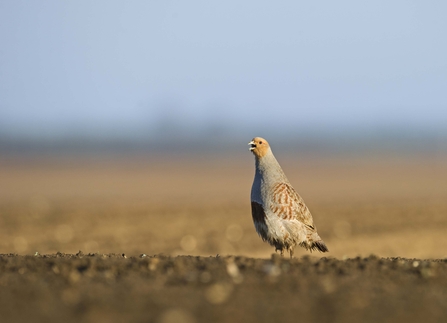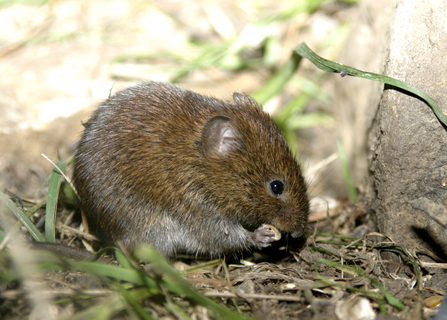The UK is one of the most nature-depleted countries in the world, with only around 53% of its biodiversity left – well below the global average of 75%.
Farming with wildlife
David Tipling/2020VISION
You might have heard the term biodiversity in the news.
Biodiversity means the variety of plant and animal life in an area and it’s one of the most important ways of determining how healthy our ecosystem is.
But the UK is one of the most nature-depleted countries in the world, with only around 53% of its biodiversity left – well below the global average of 75%.
In the UK, over 70% of our land is used for farming, much of which is driving biodiversity loss, and the food system accounts for 20% of our domestic emissions, so how we manage our land is of huge importance.

Grey partridge ©David Tipling/2020VISION
Jordans Farm Partnership farms help to create wildlife corridors, allowing animals to move more easily across the countryside.
What is the Jordans Farm Partnership?
We founded the Jordans Farm Partnership in 2016 to focus on all areas of farm sustainability – including improving soil quality, wildlife habitat provision and carbon reduction.
We work with LEAF and The Wildlife Trusts to create a holistic model, with the protection of wildlife at the heart of it. It’s a model for long term farm sustainability that’s linked directly to our food chain.
With the help of tailor-made farm wildlife plans devised by Wildlife Trust advisors, between 2020 and 2021 Jordans oat growers managed over 4,200 hectares of their 15,000 hectares specifically for wildlife, to support nature’s recover.
These Jordans Farm Partnership farms help to create wildlife corridors, allowing animals to move more easily across the countryside. As the climate continues to warm, these connected areas become even more vital to help wildlife to adapt.
Alongside nature reserves and nature-friendly habitats, these farm corridors are essential for all sorts of wildlife including insects, which in turn provide food for birds and small mammals like mice and voles.

Bank vole ©Wildstock
What’s the impact on wildlife?
In a recent poll of Jordans growers, 100% of responding farmers said they had seen a noticeable increase in wildlife on their farms since joining the partnership.
Farmers reported spotting a range of different wildlife in growing numbers, from brown hares through to endangered species such as grey partridge, lapwing and yellowhammer.
Many of the farmers also saw barn owls, bullfinches, honey buzzards and otters for the first time ever after creating or extending habitats.





